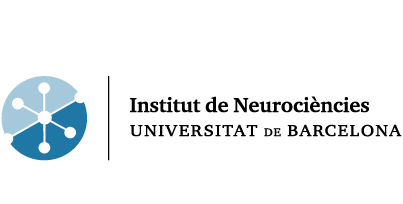JUAN BLASI CABÚS
Position: Full Professor
(Catedràtic d’Universitat)
Contact details
Prof. Juan Blasi Cabús
Department of Pathology and Experimental Therapeutics
Faculty of Medicine, c/ Feixa Llarga
08907 L’Hospitalet de Llobregat (Spain)
(34) 924024279
blasi (at) ub.edu
Research Interests
Our laboratory of Cellular and Molecular Neurobiology has a long tradition in the use of toxins, especially neurotoxins, for the study of cell and tissue processes related to regulated secretion (neurotransmitters, hormones) as well as in the molecular basis of neurodegenerative neurological diseases, such as Amyotrophic Lateral Sclerosis or Charcot-Marie-Tooth. Our lab take advantage of the acquired experience in both areas, to elucidate possible causes of a neuroinflammatory demyelinating disease such as multiple sclerosis (MS). Recently it has been suggested that epsilon toxin (Etx) from Clostridium perfringens may be a trigger agent of this disease. The toxin has the ability to cross the blood brain barrier, access the interior of the nervous system and bind to myelin. Also recently, it has been described the presence of antibodies against the inwardly rectifying potassium channel Kir 4.1 in sera from EM patients, pointing to this channel as one of the key elements in the progression and possible seed of the disease, and the role of the myelin and lymphocyte protein (MAL) in the intoxication pathway of Etx. Neither of these observations is devoid of controversy and studies that affirm, deny or clarify these observations are still required. Our aims to provide new results on both subjects related to MS, based on the observation of pilot experiments performed in our laboratory showing the colocalization of Etx with Kir 4.1 and also MAL in experimental models. The results obtained will help in the design of new therapeutic tools for the prevention and treatment of MS, as well as for the generation of molecular tools that help us understand the mechanism of action of Etx, in particularly its ability to permeabilize the blood-brain barrier, and to be used as a molecular carrier to the central nervous system.
Current Research Lines
- Clostridial toxins
- SNARE proteins
- Multiple Sclerosis
Technologies/methods
- Cellular and Molecular methodology: cloning, recombinant protein, cell culture, confocal microscopy, cytometry, differential centrifugation…
Highlighted publications
· Gil C, Dorca-Arévalo J, Blasi J. Clostridium Perfringens Epsilon Toxin Binds to Membrane Lipids and Its Cytotoxic Action Depends on Sulfatide. PLoS One. 2015 Oct 9;10(10):e0140321.
· Solsona C, Kahn TB, Badilla CL, Álvarez-Zaldiernas C, Blasi J, Fernandez JM, Alegre-Cebollada J. Altered thiol chemistry in human amyotrophic lateral sclerosis-linked mutants of superoxide dismutase 1. J Biol Chem. 2014 Sep 26;289(39):26722-32.
· Dorca-Arévalo J, Pauillac S, Díaz-Hidalgo L, Martín-Satué M, Popoff MR, Blasi J. Correlation between in vitro cytotoxicity and in vivo lethal activity in mice of epsilon toxin mutants from Clostridium perfringens. PLoS One. 2014 Jul 11;9(7):e102417.
· Pérez-Brangulí F, Mishra HK, Prots I, Havlicek S, Kohl Z, Saul D, Rummel C, Dorca-Arevalo J, Regensburger M, Graef D, Sock E, Blasi J, Groemer TW, Schlötzer-Schrehardt U, Winkler J, Winner B. Dysfunction of spatacsin leads to axonal pathology in SPG11-linked hereditary spastic paraplegia. Hum Mol Genet. 2014 Sep 15;23(18):4859-74.
· Manca P, Mameli O, Caria MA, Torrejón-Escribano B, Blasi J. Distribution of SNAP25, VAMP1 and VAMP2 in mature and developing deep cerebellar nuclei after estrogen administration. Neuroscience. 2014 Apr 25;266:102-15.



